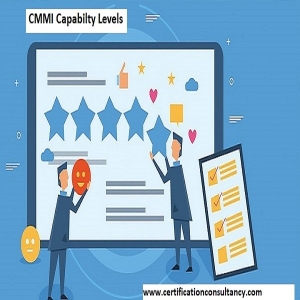CMMI: History, Inventors, Capability Levels, and AimsPosted by certification consultancy on October 16th, 2023  The industry's best practices for developing, maintaining, and acquiring goods and services are described in CMMI (Capability Maturity Model Integration). It offers a framework that enables evaluation of an organization's maturity level or its competence concerning the processes it conducts, as well as priority-setting for implementing and realising necessary adjustments. There are three CMMI models, all of which were created by the Software Engineering Institute (SEI), a Research and Development facility located in Philadelphia that is a component of Carnegie Mellon University. These models are:
Who Invented CMMI? The goal of CMMI, which was created at Carnegie Mellon University (CMU) and is mandated by many Departments of Defence (DoD) and U.S. Government contracts, is to give organizations a clear roadmap of best practices they should adhere to improve and benchmark performance across several crucial business capabilities. The capability maturity model (CMM), also known as Software CMM, was replaced by CMMI. Software CMM was designed specifically for software engineering, as its name suggests. The CMMI paradigm can now be used to design hardware, software, and services across all industries thanks to the release of Version 2.0 in 2018. Capability Levels of CMMI Additionally, the CMMI contains capability levels that are applied to evaluate an organization's performance and process improvement concerning each practice area specified in the CMMI model. Each level builds on the last, comparable to the maturity levels for evaluating an organization, and it can assist in giving structure to process and performance development. The following competence levels: Capability Level 0 (Incomplete): Inconsistent performance and an "incomplete approach to meeting the intent of the practice area" constitute Capability Level 0 - Incomplete. Capability Level 1(Initial): This stage occurs when organizations begin to address performance concerns in a particular practice area but do not yet have a full set of practices in place. Capability Level 2 (Managed): Improvement in the practice area is being specifically addressed, and progress is beginning to be seen. Capability Level 3 (Defined): Clear organizational standards are in place for dealing with projects in that practice area, and there is an emphasis on achieving project and organizational performance objectives. Capability Level 4 (Quantitatively Managed): Statistical methods are used to control a defined process at CMMI Capability Level 4. Capability Level 5 (Optimising): This is a process that is quantitatively managed and is enhanced by a quantitative understanding of the reasons for variation that are shared by the process. Levels of capability are cumulative. Aims of CMMI The following are the objectives of CMMI:
About CMMI Documents Certificationconsultancy.com is a top provider of pre-written system documentation and training presentation kits for various management and certification systems. They provide us CMMI documents kit and ready -to -use CMMI v2 templates. This CMMI documents kit contains the CMMI Manual, Quality policy, Mandatory procedures, forms, and Audit checklist. Like it? Share it!More by this author |


